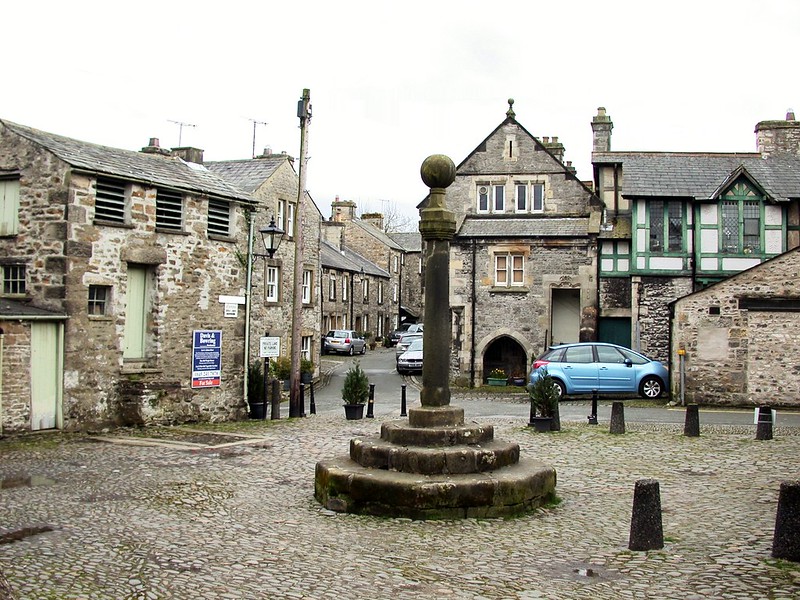
Set in a beautiful valley, the historic market town of Kirkby Lonsdale is an excellent place to shop as well as relax with a drink in its 17th and 18th century inns.
It’s also a good place for people who want to explore not one but two stunning national parks. Due to its location in the Cumbrian section of the Dales, it is within easy reach of the southern part of the Lake District.
While the rolling hills around Kirkby Lonsdale provide picturesque views, the town itself is quite magnificent. Its Georgian market square is extremely elegant, while its stone buildings have changed little in almost 300 years.
Its streets have every kind of store you can imagine without being commercialised and it also has a wide selection of pubs and eateries offering everything from the finest cuisine to quirky yet tasty treats.
Kirkby Lonsdale has been an important settlement since the Neolithic era with the remains of Celtic towns being unearthed close by. It was also inhabited by the Romans, with a milestone and the remains of a road being found close to the River Lune in 1836.
It is believed that the road was part of a route that run along the side of the Lune and connected forts at Over Burrow and Low Burrow Bridge.
Accommodation in Kirkby Lonsdale
Booking.comEach Thursday, Kirkby Lonsdale holds a market that can trace its history back to 1227. The original market took place on the corner of Market Street and Main Street, but it has relocated to the aforementioned square.
It attracts both locals and tourists and offers everything of souvenirs made by craftspeople in the town to jewellery and plants. The first Thursday in each month also sees a farmer’s market take place with fine meats from local farms available as well as breads and jams.
There are regular local bus services to and from Skipton and Sedbergh.
A much loved sight to the south of the town is Devil’s Bridge. Believed to have been built in either the 12th or the 13th century, this arched structure crosses the River Lune and is one of the few surviving bridges of its type in England.
It has been made a Scheduled Ancient Monument by English Heritage and is a popular meeting place for bikers.
The water under Devil’s Bridge attracts scuba divers as it is clear and relatively deep at 16 feet. However, diving (or tombstoning) into the water from the top of the bridge is strictly prohibited as people have sustained injuries in the past.
Another structure of historical interest in the town is the Church of St Mary on Queen’s Square. This Grade I listed building dates back to the years shortly after the Norman conquest of 1066 and has superb stained-glass windows and a Perpendicular tower that was added during the 18th century.
Perhaps more famous than the church itself, though, is the sight you receive when looking out of its yard over the Lune to the west. It has been named Ruskin’s View after the Victorian art critic and Philanthropist John Ruskin who described it as one of the best views over the countryside in England.
It was also famously painted by Ruskin’s friend J.M.W Turner and the work once hung at the Royal Academy in London, but is now in private ownership.
As well as fine paintings, the area around Kirkby Lonsdale has a literally link as two of the Bronte sisters – Charlotte and Emily – attended the Clergy Daughter’s School in nearby Cowan Bridge for one year during the mid-1820s.
The school served as the inspiration for ‘Lowood’ in Charlotte’s best known work, Jane Eyre. Kirkby Lonsdale is referenced in the novel as ‘Lowton’.
JM Barrie, author of Peter Pan, was also a regular visitor to Kirkby Lonsdale and it is believed that several of his characters were based on the family of a vicar he met while staying in the town.
